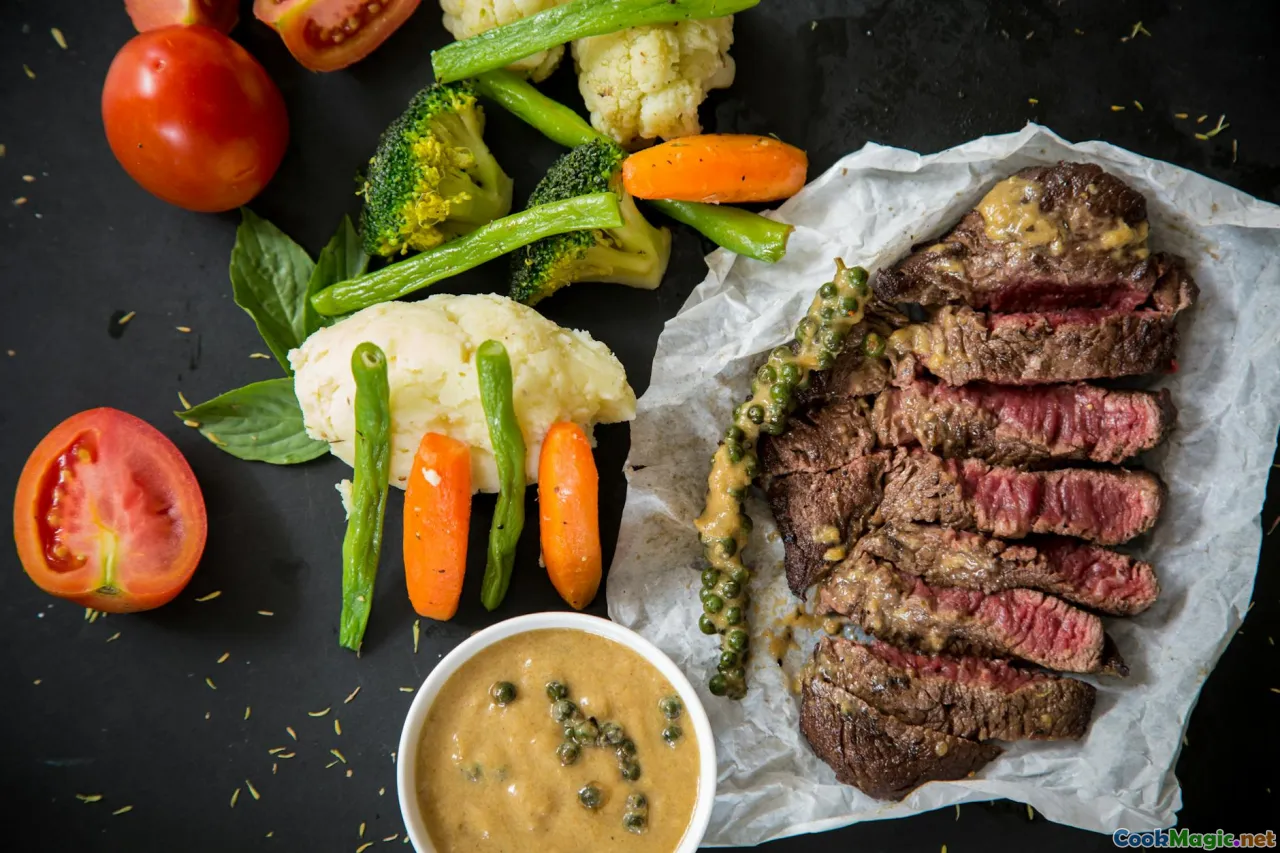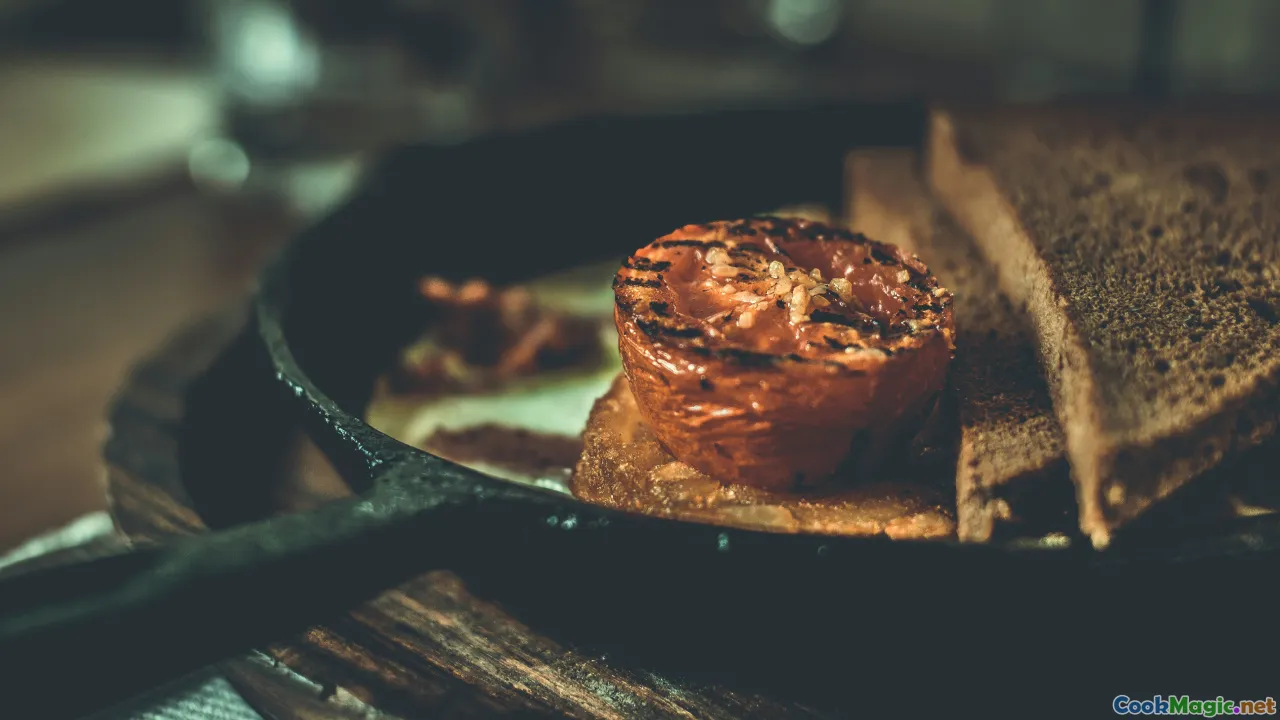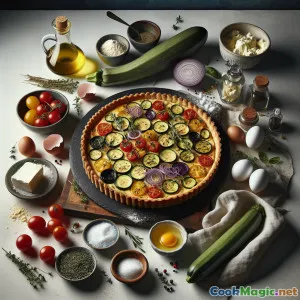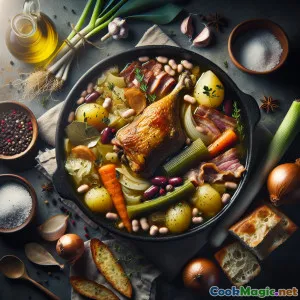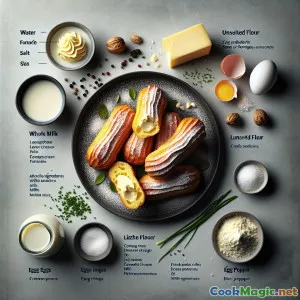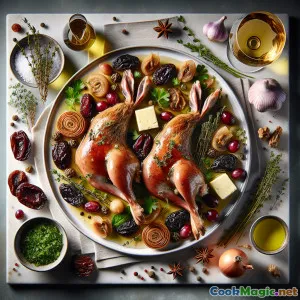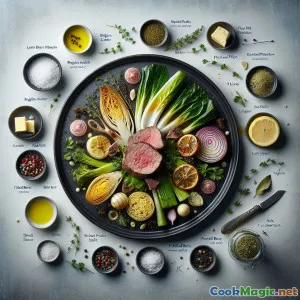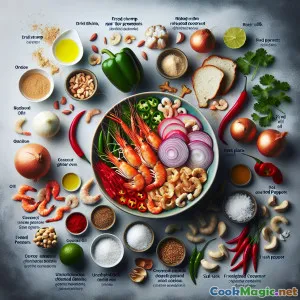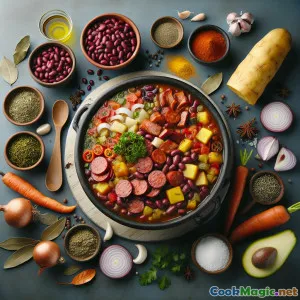
Pastel de Carne y Verduras Reconfortante del Campo
(Hearty Country Beef & Vegetable Pie)
(0 Reseñas)0
389
julio 18, 2025
Informar de un problema
Ingredientes
-
500 grams Aguja de res
(Cubed into 1.5 cm pieces)
-
2 medium Zanahoria
(Peeled & diced)
-
1 medium Chirivía
(Peeled & diced)
-
1 large Puerro
(Washed, halved & sliced)
-
2 pieces apio
(Cortado finamente)
-
2 small Papa
(Peeled & diced)
-
150 grams Champiñones de botón
(Cleaned & quartered)
-
3 cloves Ajo
(Picado)
-
1 tbsp Tomillo Fresco
(Chopped or 1 tsp dried)
-
1 piece Hoja de laurel
-
120 ml Vino tinto
(Dry; substitute with beef broth if needed)
-
275 ml Caldo de res
(Or vegetable broth)
-
1 tbsp Pasta de tomate
-
1 tsp Sal
(Plus extra to taste)
-
0.5 tsp Pimienta negra
(Recién molido)
-
2 tbsp Mantequilla sin sal
(Para saltear)
-
1 tbsp Aceite de oliva
-
2 sheets Mascarpone de mantequilla
(Or homemade (about 550g))
-
1 large Yema de Huevo
(Beaten with 1 tsp of water (egg wash))
-
2 tbsp Perejil Picado
(Para decorar)
(Cubed into 1.5 cm pieces)
(Peeled & diced)
(Peeled & diced)
(Washed, halved & sliced)
(Cortado finamente)
(Peeled & diced)
(Cleaned & quartered)
(Picado)
(Chopped or 1 tsp dried)
(Dry; substitute with beef broth if needed)
(Or vegetable broth)
(Plus extra to taste)
(Recién molido)
(Para saltear)
(Or homemade (about 550g))
(Beaten with 1 tsp of water (egg wash))
(Para decorar)
Nutrición
- Porciones: 6
- Tamaño de porción: 1 slice (approx. 260g)
- Calories: 560 kcal
- Carbohydrates: 41 g
- Protein: 28 g
- Fat: 28 g
- Fiber: 6 g
- Sugar: 7 g
- Sodium: 780 mg
- Cholesterol: 82 mg
- Calcium: 85 mg
- Iron: 4.2 mg
Instrucciones
-
1 - Brown the Beef:
In a large skillet, heat butter and olive oil over medium-high heat. Season beef cubes with salt and pepper; brown in batches until deeply caramelized. Set aside.
-
2 - Sauté the Vegetables:
In the same skillet, add more butter if necessary. Sauté leeks, celery, carrots, parsnip, garlic, and mushrooms until softened and fragrant, about 8 minutes.
-
3 - Deglaze and Simmer:
Stir in tomato paste and cook for 1 minute. Add red wine, scraping browned bits, and allow it to reduce by half. Return beef to pan along with potatoes, thyme, and bay leaf.
-
4 - Add Broth and Stew:
Pour in beef broth. Cover and simmer on low for 30-35 minutes or until the beef and vegetables are just tender and liquid thickened. Season to taste; cool completely.
-
5 - Prepare Pastry Shell:
Preheat oven to 200°C (390°F). Line a buttered, loose-bottomed 23cm tart tin with one sheet of pastry, trimming excess, and prick base with a fork.
-
6 - Fill and Top Pie:
Spoon cooled beef filling evenly into case, discarding bay leaf. Moisten edges, cover with second pastry sheet, seal and crimp edges. Cut steam vent in top.
-
7 - Bake:
Brush top with egg wash. Bake for 28-30 minutes or until golden brown and crisp. Rest 8 minutes before removing from the tin.
-
8 - Garnish and Serve:
Scatter with chopped parsley if desired. Slice and serve warm with a crisp salad or braised green beans.
In a large skillet, heat butter and olive oil over medium-high heat. Season beef cubes with salt and pepper; brown in batches until deeply caramelized. Set aside.
In the same skillet, add more butter if necessary. Sauté leeks, celery, carrots, parsnip, garlic, and mushrooms until softened and fragrant, about 8 minutes.
Stir in tomato paste and cook for 1 minute. Add red wine, scraping browned bits, and allow it to reduce by half. Return beef to pan along with potatoes, thyme, and bay leaf.
Pour in beef broth. Cover and simmer on low for 30-35 minutes or until the beef and vegetables are just tender and liquid thickened. Season to taste; cool completely.
Preheat oven to 200°C (390°F). Line a buttered, loose-bottomed 23cm tart tin with one sheet of pastry, trimming excess, and prick base with a fork.
Spoon cooled beef filling evenly into case, discarding bay leaf. Moisten edges, cover with second pastry sheet, seal and crimp edges. Cut steam vent in top.
Brush top with egg wash. Bake for 28-30 minutes or until golden brown and crisp. Rest 8 minutes before removing from the tin.
Scatter with chopped parsley if desired. Slice and serve warm with a crisp salad or braised green beans.
Más información sobre: Pastel de Carne y Verduras Reconfortante del Campo
Summary, History & Unique Notes – Tourte Paysanne de Bœuf et Légumes
The „Tourte Paysanne de Bœuf et Légumes“ is the embodiment of French rural comfort food: a robust, golden pastry encasing a rich filling of braised beef and hearty vegetables. Though pies are adored worldwide, in France, savory pies—or 'tourtes'—are traditionally found in both rustic family kitchens and regional patisseries, often serving as testaments to the countryside's bounty and frugal resourcefulness, especially through the winter months when root vegetables are at their finest.
This particular tourte combines tender chunks of beef chuck (a cut favored for its rich flavor and ability to become meltingly soft during braising), a medley of earthy root vegetables such as carrots, parsnips, potatoes, leeks, and mushrooms, all simmered slowly with aromatic herbs and a hint of wine. The filling is then enveloped by a flaky all-butter crust that shatters deliciously with every slice—a texture contrast that defines great French tourtes.
History & Cultural Significance
The roots of the French savory pie reach back hundreds of years, with plenty of historical variations. In the Pays de la Loire, Limousin, and other verdant regions, „tourte“ often references a well-filled double-crust tart. Historically, these pies were convenient ways to use up leftover meats and garden vegetables, stretching small portions over hearty family dinners. The use of beef and robust roots in this recipe makes it a particular fit for colder seasons when the cuisine naturally becomes richer and more filling.
Pies like this were often taken out to the fields as satisfying midday sustenance for peasants (hence 'paysanne'—'peasant style'), convenient to transport and hardy enough to last even without refrigeration. Many French families, particularly in the countryside, still pass down their own variations through generations.
Tips & Notes
- Pie Crusts: You can use a high-quality pre-made all-butter pastry to save time, but if you'd like, roll out your own using the pâte brisée technique. Rest your pastry before rolling for the flakiest results.
- Filling Consistency: Be sure your filling isn't too runny. Letting it cool before adding to the pie shell keeps the pastry crisp and prevents sogginess.
- Vegetable Variations: Substitute or add whatever seasonal veggies you have—rutabaga, celeriac, or turnip also work wonders. Roasting them before stewing adds sweetness.
- Herbs: Thyme, bay, and parsley are classics here, but feel free to add a dash of herbes de Provence for more complexity.
- Wine: The splash of red wine is classic, but if you prefer no alcohol, beef or vegetable broth alone will suffice.
Serving Suggestions & Unique Aspects
Serve piping hot, ideally with sharply dressed greens or glazed garden beans. A glass of light, rustic Bordeaux or a regional Loire red makes for the perfect accompaniment—the wine’s acidity and structure cutting the pie’s richness beautifully. The tourte also keeps well, making excellent leftovers; try it reheated as a hearty work lunch or cold for a French picnic spread.
What sets this 'peasant's pie' apart is its balance—robust yet layered in flavor, rich but countered by gentle herbal notes and the natural sweetness of slow-stewed veggies. Above all, it is a love letter from the French terroir: food meant for sharing, comforting, and uniting around the table.
Chef’s Reflection
Every time I make a tourte like this, I'm reminded of the power of simple, seasonal ingredients cooked slowly and with care. It doesn't rely on expensive cuts of meat or rare seasonings, but wrings extraordinary character from what grows close to home and is readily available. For families seeking tradition and flavor, there are few things better than a slice of this pie on a chilly evening, steam rising in a warm kitchen—bon appétit!

